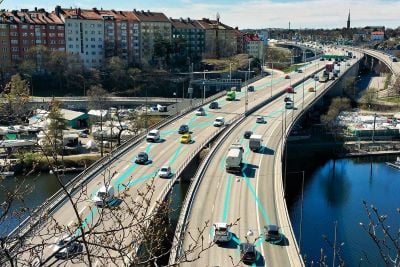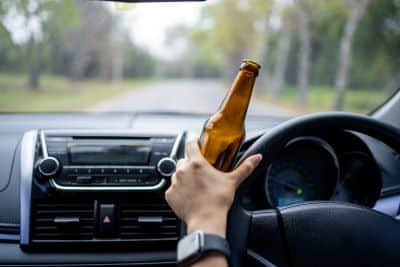As car crashes continue to rise globally, a study on a machine learning (ML) tool emerges as a vital source for intervention.
With the increasing complexity of road networks and the growing number of vehicles on the roads, traditional methods of accident prevention are proving insufficient.
The study of the new ML tool claims to offer a promising avenue for improving road safety by analyzing vast amounts of data to identify patterns and trends that may not be apparent through conventional analysis.
However, a recent study by Professor Dr. Amarendra Dhiraj, CEO and Editor-In-Chief of the CEOWORLD magazine, found the number of total accidents per country in just four months of 2024.
He said, car accidents often happen unexpectedly, prompting drivers to take evasive action. They can lead to fatalities, severe injuries, or property damage, occurring when a vehicle collides with another vehicle, pedestrian, animal, or stationary object.
Despite concerted efforts to reduce occurrences, driving under the influence of alcohol remains the most common cause of car crashes globally.
America (US) topped the chart with 1,949,000 total accidents. Japan followed next with 540,000. Germany came in at 300,143, and Turkey had 174,896 total accidents.
Undoubtedly, this causes trauma for numerous people worldwide. But does this mean that drivers will use the newly invented ML tool when it is created to predict car crashes?
Accident-Prevention Scheme
New research conducted by engineers from the University of Massachusetts Amherst sheds light on critical factors influencing road safety, paving the way for predictive measures to prevent crashes.
Engineering professionals are uniquely positioned to contribute their expertise to the development and advancement of ML technologies in various fields, including road safety. By combining their knowledge of infrastructure design, transportation systems, and data analysis, engineers can play a pivotal role in harnessing the potential of ML to enhance road safety measures.

Their understanding of complex engineering principles enables them to collaborate effectively with data scientists and researchers to analyze vast datasets, identify patterns, and develop predictive models for accident prevention.
Therefore, led by civil and environmental engineers Jimi Oke, Eleni Christofa, and Simos Gerasimidis, the study, published in the Transportation Research Record journal, addresses how the ML tool will be beneficial to drivers.
Critical factors contributing to road crashes encompassed road design deficiencies (such as abrupt changes in speed limits or inadequate guardrails), pavement deterioration (including extensive cracks and “alligator” cracking patterns), and insufficient signage and road markings.
Collaborating with civil engineers from Egnatia Odos, a Greek engineering firm, the researchers analyzed a comprehensive dataset spanning 9,300 miles of roads across 7,000 locations in Greece.
The findings, though rooted in Greek road infrastructure, hold broader implications for global road safety. According to Oke, the identified features are likely universally applicable, transcending geographical boundaries.
Leveraging ML techniques, the researchers anticipate the findings to inform targeted interventions to mitigate road accidents, not only in Greece but also in other countries, including the US.
The implications of this research extend to numerous future applications, particularly in facilitating further investigations. “We had 60-some-odd indicators. But now, we can just really focus our money on capturing the ones that we need,” he elaborated.
“One could dig deeper to understand how a certain feature actually could contribute to crashes and then measure to see if fixing the issue would actively reduce the number of incidents that occur.”
Furthermore, this research holds potential for training Artificial Intelligence (AI) in real-time road condition monitoring. He added, “You could create models that can identify these features from images and then predict the crash risk as a first step towards an automated monitoring system and provide recommendations on what we should fix.”
However, amidst these advancements, the persisting issue of driving under the influence of alcohol remains a significant concern globally.
Fix Human Error First
As highlighted by Dhiraj, alcohol remains the most common cause of car crashes worldwide. Thus, while technological innovations hold promise for enhancing road safety, addressing behavioral factors such as drunk driving remains imperative in ensuring comprehensive accident prevention strategies.

An article in Forbes Advisor claimed that every day in the US, approximately 37 individuals lose their lives in car crashes involving drunk driving, translating to one alcohol-impaired driving fatality occurring roughly every 39 minutes.
Drunk driving will persist unless individuals take responsibility and refrain from drinking while operating vehicles or choose not to drive altogether when under the influence.
In addition to addressing behavioral factors like drunk driving, comprehensive accident prevention strategies should also focus on implementing stricter enforcement measures, increasing public awareness campaigns, and providing accessible alternatives such as designated drivers or ride-sharing services.
Moreover, community involvement and support systems can play a crucial role in promoting responsible alcohol consumption and discouraging impaired driving. By fostering a culture of accountability and prioritizing safety on the roads, we can work towards reducing the devastating impact of drunk driving on individuals, families, and communities.
However, the effectiveness of the ML tool may not solely hinge on drunk driving as the determining factor.
Warning: Cease Mobile Device Usage While Driving
While drunk driving often tops the list as the leading cause of car crashes, the reckless use of mobile devices while driving also significantly contributes to these statistics.
Last year, a study conducted by Three60 revealed that cellular applications are the biggest distraction for drivers who use their phones behind the wheel.
The latest Road Safety Monitor survey by the Transport Accident Commission (TAC), comprising 2,492 participants from Victoria, unveiled concerning statistics. Among respondents, 52% admitted to using a mobile phone in their hands while driving, with a significant majority (45%) engaging with various apps.
Additionally, a quarter of those who acknowledged hand-held phone use reported either making or receiving calls or sending or reading text messages. Furthermore, respondents revealed a higher frequency of app usage while driving, with over a quarter admitting to doing so ‘sometimes’ or ‘most of the time’, significantly surpassing the frequency of calls made or received.
The survey also found that 3% of respondents admitted to driving under the influence of alcohol above the legal limit.
This statistic highlights the necessity for holistic approaches in tackling road safety, addressing not only the physical infrastructure of roads but also the behavioral factors contributing to accidents.
It’s essential to recognize that some respondents may have provided inaccurate information regarding their drinking and driving habits, emphasizing the importance of addressing both infrastructure deficiencies and the underlying attitudes and behaviors that contribute to road accidents.
It’s difficult to ascertain the likelihood of a drunk driver using an app that predicts car crashes, as individual behaviors and decision-making processes can vary significantly. However, it’s important to consider that impaired judgment and cognitive function associated with alcohol consumption may impact the driver’s ability to utilize such an app effectively.

Additionally, the motivation or willingness of a drunk driver to engage with safety-oriented technology while under the influence may be compromised.
Nonetheless, the potential benefits of such an app in preventing accidents and promoting road safety remain significant, and efforts to encourage its use among all drivers, including those who may be impaired, could contribute to reducing the incidence of alcohol-related crashes.
This still leaves us with the question: If a drunk driver opts not to use the app for predicting car crashes, what impact could this decision have on reducing the death toll percentage? If mobile applications are distractive to drivers, how will this ML tool be useful? How effective will this ML tool be, under what circumstances will it be effective, and for whom?
Machine Learning Tool: More Research
Beyond its immediate impact on road safety, the study by University of Massachusetts Amherst opens avenues for future research and applications. By pinpointing critical indicators of crash risk, it streamlines resource allocation for targeted interventions, ensuring maximum efficacy in improving road safety outcomes.
Moreover, the research lays the groundwork for real-time road condition monitoring using AI, offering the potential for automated systems to detect and address safety hazards proactively.
Gerasimidis emphasizes the practical significance of the study, highlighting its potential to influence policy and engineering practices. By showcasing the tangible outcomes of AI-driven research, the study underscores the transformative potential of collaboration between academia and engineering firms in addressing complex societal challenges.
However, the study should be customized for a specific target audience, or additional measures should be explored to address both individuals who engage in drunk driving and those who refrain from using mobile devices while driving altogether. Perhaps a built-in ML tool can be added in the vehicle, in which preventative crash measures can be features on it.
Ultimately, the research serves as a testament to the power of interdisciplinary collaboration and data-driven approaches in enhancing road safety and saving lives.
References
Revealed: These Are The Countries With the Most Car Accidents, 2024
Apps are the biggest distraction for drivers who use their phones behind the wheel
New machine learning model can predict car crash sites – study


